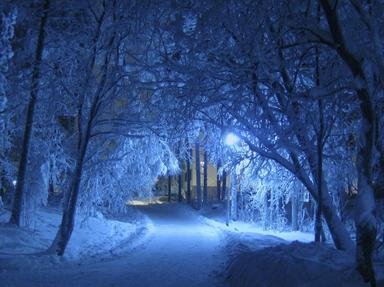Quiz Answer Key and Fun Facts
1. A theory about the origin of the names "Suomi" and "Finland" maintains that both names are associated with which distinctive feature of the Finnish natural landscape?
2. One of the few non-Indo-European languages of Europe, Finnish belongs to the Uralic language family. Like all its relatives, it is an agglutinative language. What is meant by that?
3. Composer Jean Sibelius is one of Finland's national icons. One of his best-known works is a suite titled after what region, most of which was lost by Finland as a consequence of WWII?
4. During the 20th century, Finnish design acquired worldwide renown. In particular, Alvar Aalto produced some groundbreaking work in furniture, glassware, and textile design. What was, however, his primary field of expertise?
5. In the late 19th century, many Finns emigrated to the United States. In which part of the country, remarkably similar to Finland in terms of geography and climate, would you find the highest concentration of people of Finnish descent?
6. Much of the "Kalevala", the Finnish national poem, revolves around the Sampo, a coveted wealth-producing artifact. Though its nature is never clearly specified, what object (important for food production) is the Sampo generally believed to have been?
7. Sauna is such an important part of Finnish culture that it has been recognized by UNESCO as Intangible Heritage. One of the objects associated with sauna is the "vihta", a whisk made with boughs of what Finnish national tree?
8. Finland has a number of national animals, including a national dog. Called "suomen pystykorva" ("Finnish pointed-ear"), what type of dog is it?
9. One of Finnish cuisine's most intriguing dishes is a dessert called "mämmi", traditionally eaten for Easter. Its main ingredient is the flour of what grain - widely used for breadmaking in Northern Europe (and New York City)?
10. Finns love their public holidays. One of the most significant is Independence Day - celebrated in which month of the year?
Source: Author
LadyNym
This quiz was reviewed by FunTrivia editor
agony before going online.
Any errors found in FunTrivia content are routinely corrected through our feedback system.
